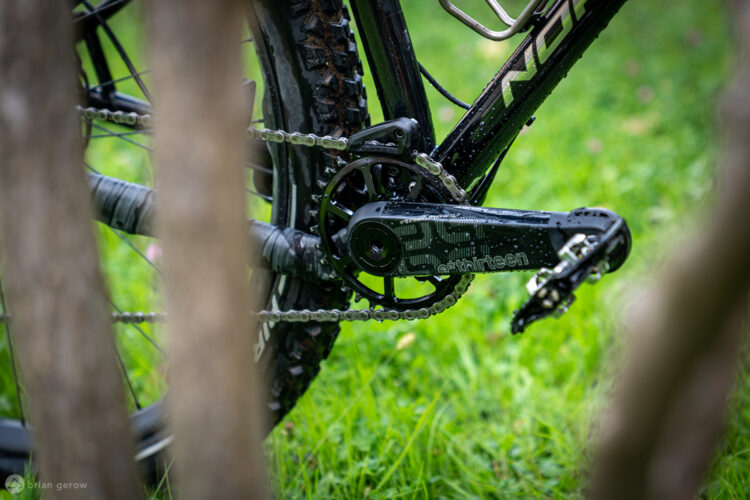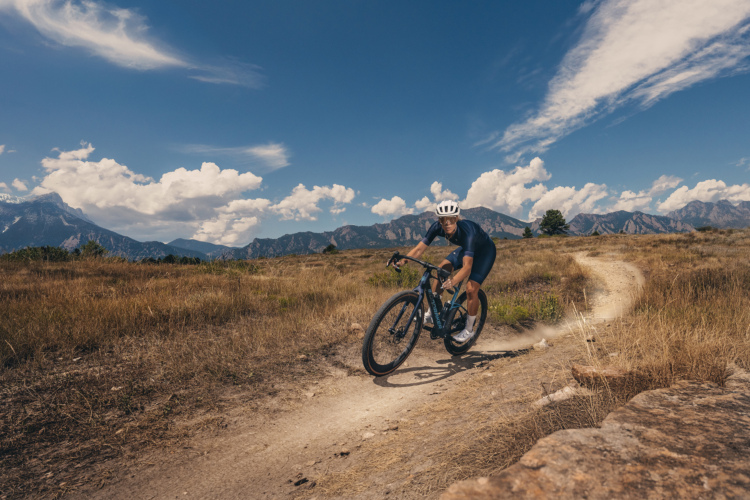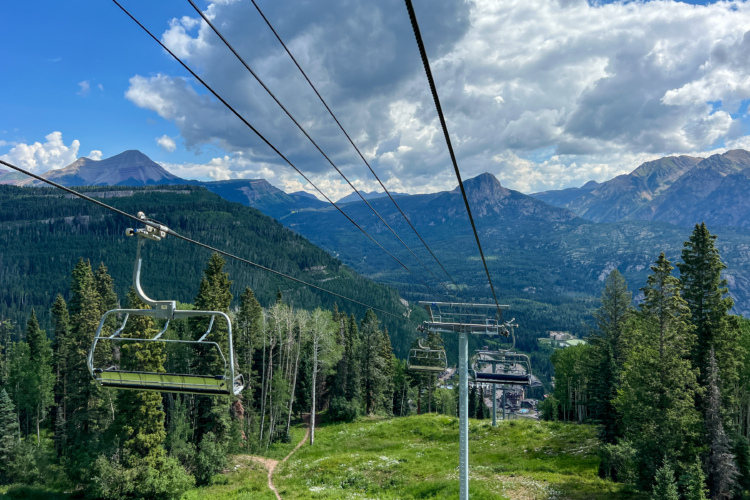
The more I rode the Zerode Taniwha, the more I realized how conventional drivetrains are, for lack of a better word, kind of… dumb. Joe Rogan often mentions the same feeling after he’d driven a Tesla and returning to conventional gas-powered autos. Improving upon current, traditional designs becomes the norm, rather than rethinking a system entirely.
Why are conventional drivetrains “kind of… dumb?” How many Jeeps and off-road vehicles, or any vehicle for that matter, yank their gears and expensive components out of their sealed and reinforced cases and put them right in harm’s way? Yeah, none of them, because that would be a super dumb idea. But, for some reason, that is the norm for modern mountain bikes.
The Shimano XTRs and SRAM X01s feel better than ever and they are more durable than ever, but the same potential danger that has always existed can still stop a $250 derailleur dead in its tracks, or at the least, leave you stranded in the backcountry because of a broken $20 derailleur hanger. I can’t actually say I’ve had either happen, but I know friends who have broken many of both. I also use the word “dumb” ironically as I can hardly design a respectable wooden shelf, much less a piece of mechanical complexity that has made mountain biking better throughout the years.
But, cassettes wear out after a few years or faster, depending on the rider. Those who put a lot of miles on their rigs can go through two or three chains a year. And chains need constant attention, cleaning, and lubrication. And then, of course, a hard pedal in the wrong gear can snap a chain or a sniper rock can take out a derailleur.
Part of the issue is that our drivetrains have taken a generation to get to a decent place. According to BikeRadar, bikes with variable speed gearing didn’t debut until the late 1800s, and the derailleur was born in the early 1900s. The Tour of France didn’t see derailleur systems in the race until almost 1940, and mountain bikes didn’t have indexed shifting until 1989.

Then, 3x systems went to 2x, and 2x went to 1×11 just eight years ago with SRAM, followed by the 1×12 in 2016. In the past few years, SRAM and Shimano have been devoted to making 1×12 systems light, durable, and affordable. Two out of three of these aspirations are far more challenging for gearbox bikes to attain. As our staff writer Gerow mentioned in his deep look at gearbox pros and cons, a gearbox can easily add a pound to a pound and a half compared to a traditional drivetrain, something that XC riders and folks concerned with weight would certainly be wary about.
Gearboxes also carry a more significant price tag than external drivetrains, which can now be had for a fraction of a gearbox’s cost. So, the practicality between the two comes down to initial cost and durability versus the long-term cost and potential for mitigating maintenance and damage. So, even if traditional drivetrains are kind of dumb, they are not easily replaced by a gearbox. Anyways, on to more about the Zerode Taniwha.
About the bike

The Taniwha isn’t a new bike. It’s actually been out for about four years. Greg had a first ride on the enduro bike back in 2017, but there have been recent changes to how Zerode has implemented the Pinion gearbox. In 2020, they started offering a Gates Carbon belt drive on the Taniwha, further shrinking potential problems and maintenance.
Before and during Greg’s test, the Taniwha used a chain and a single cog. The Gates Carbon Drive system uses a carbon belt, which Gates says doesn’t stretch over time and has twice the life of a chain. The belts come with a 2-year warranty. The belts are also designed to easily shed mud and debris.
For a bike design that’s four years old, this thing hasn’t aged terribly, although it has grayed a bit. There are three sizes on the Taniwha. The 74.5° STA and a 65° HTA are probably a degree-and-a-half off any new 160mm enduro bikes out these days. Zerode notes their sizes by reach “as we feel this is the most important factor when deciding on your perfect bike.”
I ended up with a size large, or size 475 (reach) when I usually ride a medium, but the saddle still bumped me on steeps and jumps due to a longer seat tube, even when it was down. Aside from not being able to successfully upsize the bike by reach, geometry wasn’t as up to date compared to new enduro bikes, but it didn’t feel prohibitive.
Cycle Monkey is the US distributor for Zerode and they sell a few different build kits. My test bike had a new Cane Creek Helm fork and Double Barrel shock, Industry Nine Enduro S wheels with Hydra hubs, Shimano XT brakes, and a Fox Transfer dropper post. This exact build isn’t available for purchase, but it’s somewhere between the $7,800 Performance build and their $9,700 Signature build.
I reached out to Cycle Monkey for a few details on how they sell the Taniwha. They don’t expect Zerode to update the geometry anytime soon. For the 12-speed gearbox, front and rear sprockets, chain tensioner, crank arms, and shifter, the Taniwha is priced at $5,000 with a Cane Creek Inline, or $5,200 for the DB Air. For an extra $300, Cycle Monkey adds the Gates belt drive kit. If buyers don’t want a 12-speed, they can take $100 off for the 9-speed version. The P1.12 transmission has a 600% overall gear ratio, whereas the 9-speed C1.9XR has a 568% overall ratio. The 12-speed weighs 150g more than the 2200g 9-speed gearbox.
Zerode also makes the Katipo 29er that comes with either 160mm or 140mm of rear travel. But, the Katipo only comes in either a size L or XL. As a 140mm trail bike, the Katipo matches the head angle of the older Taniwha, and the STA is 1.5° steeper at 76°.
Zerode notes on the site, “Depending on demand, we may offer a slightly smaller frame down the track. However, we believe most smaller riders will naturally feel at home aboard a Taniwha or even Taniwha Mulét.” I don’t know how big they think the average mountain biker is, but I want to try the Katipo Trail, I am 5’8″ tall, and I prefer 29ers.
Cycle Monkey attributed the non-production of smaller-sized Katipos to Zerode being a small company. Tooling and production is expensive, but it sounds like the brand is willing to work with riders to make other sizes possible.
Grip (shift) it and rip it

First things first. The Pinion shifting takes some getting used to, but I wouldn’t call it a dealbreaker by any means. When Gerow spoke with some gearbox brands for his article, they mentioned that a lever shifter will come soon to gearboxes, but so far we’re only seeing it on bikes with Effigear transmissions.
The grip shifter just isn’t as intuitive as a lever shifter for me, but part of that is probably due to many years of lever shifting ingrained into my hands. As I rode the Zerode more, it felt less problematic and more instinctual, but still, never quite as comfortable as a lever.
My timing got better, too. I anticipated my shifts ahead of changing terrain more quickly, and got stuck less. I loaned the bike to a friend for a ride, and by the end of an 9-mile loop, he seemed to have a pretty good grasp. While some might find timing the shifting, or not being able to apply pressure on the cranks during shifting off-putting, I have been stuck on conventional drivetrain bikes countless times, because I’ve come out of a descent and into a climb in too high a gear, with too little space to downshift. With a gearbox bike like the Zerode, it becomes almost seamless to dump your gears in a second and find the right one.
Finding the right gear was a little trickier on my test bike, as I had the 9-speed. I think if I were to buy a gearbox for myself, I’d opt for the 12-speed. The 9-speed has everything you need, but I was shifting back and forth a lot, trying to find the right gear, and often felt I was either too high or too low.

One other negative I noticed about the gearbox, is that it has a freewheel of its own. The shifting mechanism uses pawls, which expand to engage the gear pairs. “The pawls are quite large compared to ones you’d find in a freehub body and have 13 engagement points with the gears per one rotation of the shifting shaft,” said a rep from Pinion.
As a result, there are pretty large gaps in engagement in the Pinion freewheel before the cranks actually start moving the rear wheel. This feels like it negates the high-engagement I9 hub in the rear, since the freewheel in the gearbox has to catch first.
Aside from that, I didn’t have any problems with the gearbox, the belt drive, or any of the drivetrain mechanisms. The belt drive seems to do exactly what it intends to. The belt keeps the bike even quieter and reduces maintenance, and the lack of clanging is one of the Taniwha’s standout features. Except for the buzzy rear hub, the Taniwha is very quiet, and it’s quickly noticeable how much noise is coming from chains and derailleurs compared to other bikes.
While the Taniwha I rode weighed about 34 pounds with pedals — not absolutely terrible for an enduro bike, but definitely not light — it’s a reasonable climber. I wasn’t bolting uphill, but anyone can sit and spin easily to the top of a steep hill without bobbing up and down through the suspension. Even with the 9-speed I rode, the ratios compute to an easier granny gear than on my own SRAM Eagle 52T paired with a 32T chainring up front. I do wish the seat tube angle was a tad steeper though.
As one can imagine with any 160mm bike that weighs 33lbs, the Taniwha comes to life in certain scenarios. I liked it best on steep grades littered with chunky rocks. As Greg noted in his test ride on the Taniwha, it feels like there is something very noticeable happening when the bulk of the drivetrain weight is relocated to the bottom bracket.
The Taniwha has one of the most smooth and impressive-feeling suspension systems I’ve ridden over technical terrain. The rear wheel rolls right over messy rock gardens and the bike keeps picking up speed. I have to believe that there is some magic to be had by pairing the gearbox with the Taniwha’s suspension.
Closing thoughts

This wasn’t intended to be a full review on the Taniwha, as the bike has been out for a while and there are reviews aplenty. I had the chance to try the bike with the gearbox fully optimized with the Gates Carbon Drive Belt and wanted to share my experiences.
On my last ride with the Taniwha, after I’d written the intro to this review, another rider passed my friend and I as we were stopped for a break, and screeched to a stop and inquired. “Derailleurs are just dumb!” he said. The trail we were on was tight and rocky and ripe with derailleur-eating features.
I concurred. But, in a lot of ways, derailleurs are still the best way to outfit a mountain bike with a multi-geared drivetrain and keep their weight and price down. The Taniwha is a heavy bike, and not one I’d think of first for all-day backcountry rides. I would certainly try a 140mm Katipo Trail for those types of rides if they had smaller sizes.
Mostly though, my experience with the Taniwha was refreshing. It’s nice to know that there are brands and people out there who are pushing for something different than the norm and that the result is anything but a gimmick.
I’m not totally won over by gearbox bikes yet, but they’ve got a pull on me. If they continue to progress, and down the line there’s a bike that’s a little lighter, a little less expensive, and maybe it has a lever shifter too… then, consider me smitten.











10 Comments
Feb 5, 2021
Feb 10, 2021
I can't wait to lose my only derailleur once and for all.
Can you imagine the bitching online if motorcycles had external gearing...
Feb 6, 2021
Feb 7, 2021
Feb 12, 2021
Nov 25, 2021
Feb 12, 2021
Feb 6, 2021
Both of the mentioned internal gear systems are works of engineering art. Pinion is interesting in that the weight is centered and low.
Feb 11, 2021
Feb 12, 2021
i have snapped a belt on one of my bikes and was glad to have a spare, and after two gear hub failures touring i would never go near such a setup away from civilisation again. spares for your gear box anyone....?
so even if prone to a variety of problems a derailleur system is a better guarantee to make it limping home again. to better your odds bring two or three hangers, tools for chain repair, and why not a chain tensioner.